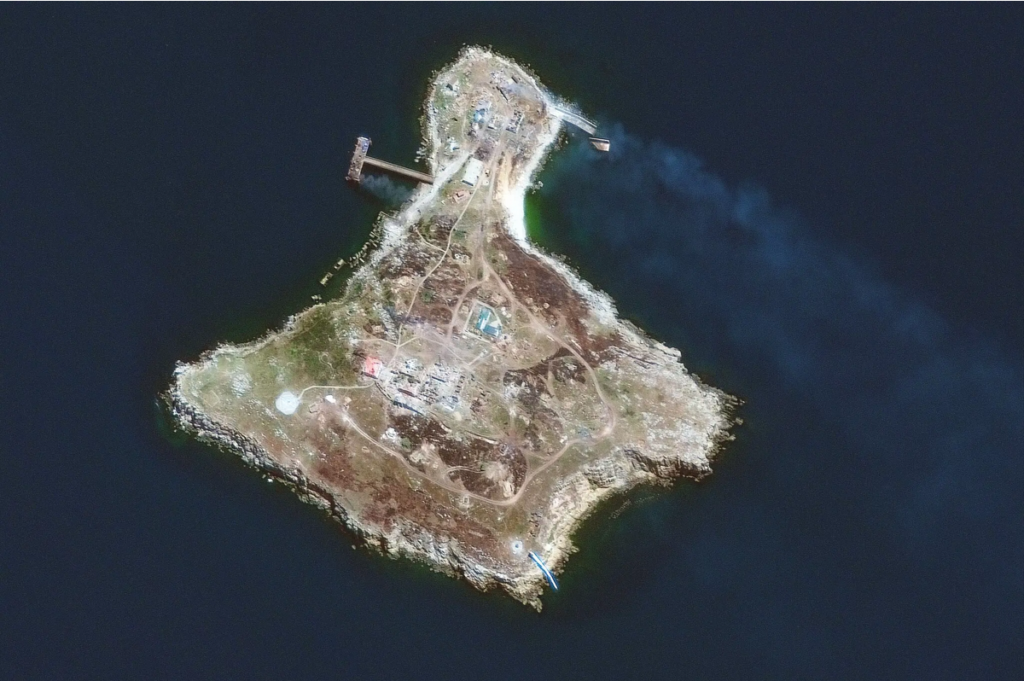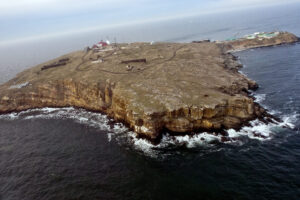Battle of Snake Island – A Modern Units Database Perspective
I am quite a bit behind on providing updates on the War in Ukraine so I am going to focus the next few weeks to the conflict since a lot has happened recently. Today’s update will focus on the re-capture of Snake Island, which is a morale win for Ukraine, if not a strategic one.
This is a continuation of the What MUD Tells Us About Ukraine series. As this series suggests, we are going to tie this to the massive amount of data collected for the Modern Units Database to help understand what is happening. This blog isn’t trying to evoke an emotional response in the way that a new outlet might approach the war, and instead looks at it purely in a statistical and strategic context. Please go to your local news outlet if you are looking for that type of material.
What Happened on Snake Island
At the beginning of the war, footage of a Russian warship close to the shoreline quickly emerged from a live stream of a soldier stationed on the island. This followed with the revelation that the island surrendered after taking fire and Russian special forces later forcing them to surrender. Later on, the warship involved in the attack was sunk and the island occupied by Russian forces. But the question to some is why this became such a big deal to the war effort?
This island is relatively unimportant to Ukraine in peacetime. It offers no strategic value to Ukraine in a war dominated by land warfare, except for helping create a safe corridor for commercial shipping during the war. However, it is a vital part of the Russian strategy to blockade the coastline of Ukraine. Just a handful of missile batteries placed at this location could support or prevent an amphibious assault on Odesa. It would also be vital to creating a supply route to Transnistria, or to hindering NATO’s surveillance and defense of the Black Sea. As a result, many of Russia’s strategic options required the capture of this island as the first step of their western operations.
If Russia was able to accomplish air superiority, creating a sea route isn’t a necessity to opening a front in the Odesa/Transnistria border. However, as time wore on it became clear that Ukrainian airspace would remain closed to Russian transport planes. This limited Transnistria’s ability/interest towards entering the war. The problem was later exacerbated by Moldova’s challenge to Russia’s presence. The need to create a corridor became important to the overall war goal of blocking Ukraine from the sea. This is effectively how Snake Island went from a relatively unimportant engagement in the Black Sea to a near imperative for Russia operations a month later.
How Long Can You Hold
Controlling the island turned out to be an expensive ordeal. Russia’s repeated attempt to station defensive systems on the island was costly. This is due to a factor in warfare called attrition, which Russia is famous for using against its enemies in World War II. due to the secrecy required in ongoing operations, the public isn’t made aware of actual casualties and attrition figures until after the engagements are over. However, the data collected in MUD can give some perspective to this.


Over the course of the battle, news outlets, intelligence leaks, and other propaganda revealed a bit of the dispositions and losses facing both sides. Below is a table showing an assessment from MUD’s data collection of all the reports from both sides, with an emphasis on those that could provide video proof or confirmation from a reliable source.
| Ukrainian Forces (MUD Value Metric) | Russian Forces (MUD Points Metric) |
|---|---|
| Verified Forces using MUD Standardization System 1 Recon Infantry Garrison (14 points) 2 Tractor – TEL (7 points) 2 Mobile Heavy Artillery (35 points) 4 Rocket Artillery (6 points) 20 Anti-ship missiles (4 points) 2 Inflatable Boats (1 points) 2 Strike Fighters (220 points) 2 UAV Drones (226 points) 1 MAV Drones (14 points) | Verified Forces using MUD Standardization System 4 Commando Teams (30 points) 1 Marine Infantry (22 points) 1 Recon Infantry (14 points) 1 Sappers (22 points) 2 Tractor – ECS (7 points) 5 SPAA (43 points) 1 SPAAG (6 points) 4 Air Assault Helicopters (45 points) 4 Attack Helicopters (43 points) 2 Multi-Role Aircraft (220 points) 1 Cutter (528 points) 3 LCU, two class types (54 points) 1 Barge (11 points) 1 Attack Transport (405 points) 1 Guided Missile Cruiser (3,148 points) 5 Patrol Boat (61 points) Cruise Missiles, Unknown number, at least 14 (between 3 and 20 points per missile) |
| Reported or Verified Losses* 1 Recon Infantry Garrison (14 points) 1 Strike Fighter (220 points) 16 Anti-ship missiles (64 points) | Reported or Verified Losses** 1 Commando Team (30 points) 1 Tractor – ECS (7 points) 5 SPAA (172 points) 1 Air Assault Helicopter (45 points) 1 Attack Helicopter (43 points) 1 Barge (11 points) 1 Guided Missile Cruiser (3,148 points) 4 Raptor Patrol Boats (244 points) 1 LCU (54 points) |
| Committed: 1,110 points ($111Mn to $450Mn EUD) | Committed: 5,946 points ($595Mn to $2.675Bn) |
| Sustained Attrition: of 5 – 7% per day (includes ammunition figures as equipment) Total Attrition: 25% projected per scenario | Sustained Attrition: 20 – 25% per day (includes ammunition figures as equipment) Total Attrition: 66% projected per scenario. |
| TOTAL SCORE: 4,566 (Ukraine wins 64.7%of all projections in this scenario) | TOTAL SCORE: 2,490 (Russia loses 35.2%of all projections in this scenario) |
In other words, it looks like Russia was losing two thirds of all equipment and manpower it was using to secure Snake Island. These losses were not sustainable for them. You might argue that the Moskva shouldn’t be included in these figures, as its sinking was considered a separate event, the attrition levels are still above 20%. This means they were losing almost a quarter of their manpower and equipment attempting to use this strategic location.
In reverse, Russia was unable to effectively counter the Ukrainian harassment. The numbers show the most pessimistic figure, by Russian account of Ukraine losses, and it only reaches 25% sustained attrition. That figure is considering the report (still unconfirmed) of a fighter being shot down as accurate. If you remove that from the equation, it comes down to 7% attrition, almost all of which are in the form of expended ammunition, not military personnel.
In other words, every day Russia occupied the island and didn’t make progress towards Odesa or Transnistria, it was effectively eating up equipment that was needed elsewhere. This was to the tune of around $119 Mn EUD per day of equipment and manpower that it could be use elsewhere. Once it was clear that Odesa was not an immediate objective, abandoning the island as the best move forward.
The Cost of Recapture and Impact of Attrition
Once it became clear that Transnistria wasn’t a viable front, Russia abandoned the island in a show of good will. From video footage taken during the re-capture, we know there were at least three elements involved:
- One MAV used to take the aerial footage
- At least one element of special forces, likely a border guards detachment with de-mining equipment (i.s. Sappers)
- At least one fast boat, categorized under Inflatable Boats in MUD


The real issue to holding Snake Island is the attrition impact on its occupier. The remote location makes it an easy target for whichever side wants to hold the island. In our model, this is called “sustained attrition,” or how much loss in manpower and equipment the occupier has to expect to take every day in order to hold the area.
Russia’s attrition was much higher in practice, with a sustained attrition around 20%. This is due to proximity to land-based systems and the inability to establish an effective ground air defense system. Inversely, Ukraine is at around 7% sustained attrition, mainly due to Russian’s higher level of difficulty in attacking the island without endangering its own weapons platforms (mainly ships). Unlike the millions it cost Russia to occupy the island, the sustained attrition is only $7,000 EUD for Ukraine, assuming the minimum commitment needed for the island’s defense.
What’s Next
For the time being, Ukraine can rest easy in knowing that Russia isn’t likely to conduct another assault on the island. It would only do so as part of a large offensive with clear objectives and a force committed a larger campaign. If this happens, then Snake Island is probably the least of their worries. The alternative is if Russia attempts another brash assault out of spite, in which case Ukraine should be ready to simply continue their attritive attacks until Russian forces retreat once more.







